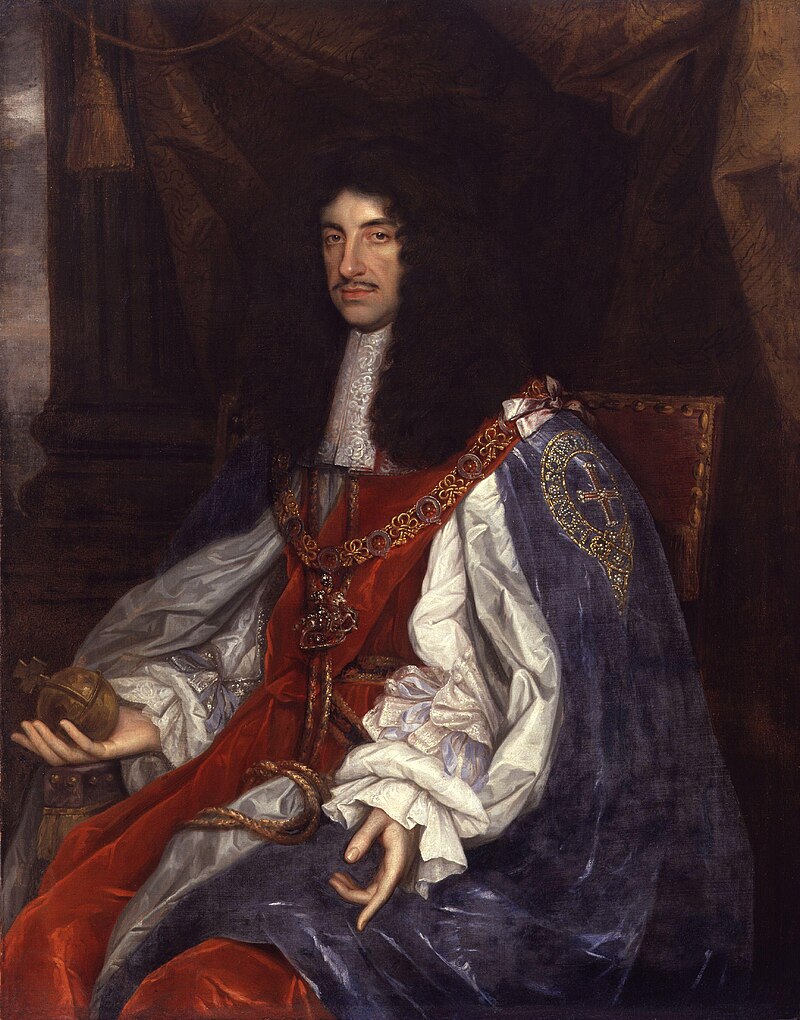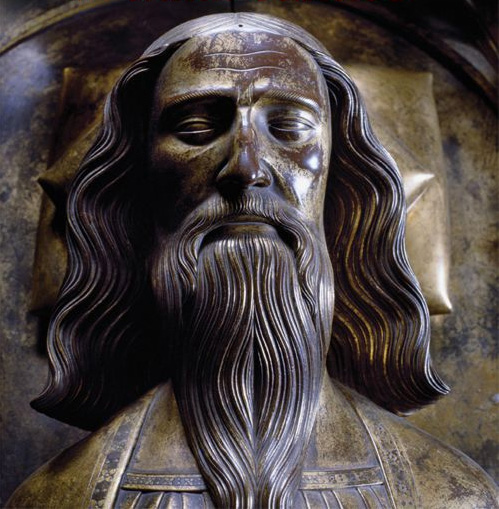© Unofficial Royalty 2024

María de las Mercedes of Orléans, Queen of Spain; Credit – Wikipedia
June 24, 1246 – Death of Richard FitzRoy, illegitimate son of King John of England, at Chilham Castle in Chilham, Kent, England; buried at St. Mary’s Churchyard in Chilham, Kent, England
Richard FitzRoy was the illegitimate son of King John of England and Ela de Warenne. During the First Barons’ War (1215 – 1217), when a group of barons, with the support of King Philippe II of France, rebelled against Richard’s father King John of England, Richard supported his father as one of the commanders of the royal army. Richard’s father King John died on October 19, 1216, and was succeeded by Richard’s nine-year-old half-brother King Henry III of England. Richard was the constable of several castles including the important Wallingford Castle in Berkshire, England, served as Sheriff of Berkshire, and accompanied his half-brother on many military campaigns.
Unofficial Royalty: Richard FitzRoy, Illegitimate Son of King John of England
June 24, 1291 – Death of Eleanor of Provence, Queen of England, wife of King Henry III of England, at the Abbey of St. Mary and St. Melor in Amesbury, England; buried at the Abbey of St. Mary and St. Melor in Amesbury, England
Eleanor’s husband King Henry III died in 1272 after a 56-year reign, making him the fourth longest-reigning British monarch after Queen Elizabeth II, Queen Victoria, and King George III. Eleanor survived her husband for 19 years and helped raise several of her grandchildren. In 1280, Eleanor retired to the Abbey of St Mary and St Melor in Amesbury, England where she died on June 24/25, 1291. It appears that Eleanor requested that she be buried with her husband at Westminster Abbey, but was buried at the Abbey of St. Mary and St. Melor where she had died. Eleanor’s remains were lost when the Abbey was destroyed in 1539 during the Dissolution of the Monasteries. Her heart was buried at London’s Greyfriars Monastery which was destroyed in the Great Fire of London in 1666.
Unofficial Royalty: Eleanor of Provence, Queen of England
June 24, 1311 – Birth of Philippa of Hainault, Queen of England, wife of King Edward III of England, at Valenciennes, Flanders, now in France
King Edward III and Philippa married at York Minster in York, England. The couple’s main home was Woodstock Palace in Oxfordshire, England. It was Philippa’s favorite residence and the birthplace of four of her thirteen children including her eldest child, Edward the Black Prince, who was born days before her sixteenth birthday. The sons of Edward III and Philippa married into the English nobility and their descendants later battled for the throne in the Wars of the Roses.
Unofficial Royalty: Philippa of Hainault, Queen of England
June 24, 1532 – Birth of Robert Dudley, 1st Earl of Leicester, favorite of Queen Elizabeth I of England
Queen Mary I died on November 17, 1558, and her younger half-sister came to the throne as Queen Elizabeth I. Because Robert had been a companion of Elizabeth’s half-brother King Edward VI, the two were well-acquainted, and it was natural for Robert Dudley to become one of Elizabeth’s most trusted courtiers. The day after her accession to the throne, Elizabeth named Robert her Master of the Horse. Although it is a ceremonial role today, it was an important position in Tudor times. Robert remained a powerful and important political figure for the rest of his life. From the beginning of Elizabeth’s reign in 1558 until he died in 1588, Robert was one of her most conscientious privy councilors.
Unofficial Royalty: Robert Dudley, 1st Earl of Leicester
June 24, 1768 – Death of Maria Leszczynska of Poland, Queen of France, wife of King Louis XV of France at the Palace of Versailles in Versailles, France; buried at the Basilica of St. Denis near Paris, France
As Queen, Marie maintained the strict protocol and etiquette of the French court and fully embraced her role and responsibilities of her ceremonial role. However, when not at official functions, she preferred to retreat to her private apartments, spending time with a small group of close friends and confidants. Queen Marie died at the Palace of Versailles on June 24, 1768. She was buried at the Basilica of St. Denis near Paris, while her heart was entombed at the Church of Notre-Dame-de-Bonsecours in Nancy. Having held her position for nearly 43 years, Queen Marie was the longest-serving Queen consort in the French monarchy.
Unofficial Royalty: Maria Leszczynska of Poland, Queen of France
June 24, 1818 – Birth of Karl Alexander, Grand Duke of Saxe-Weimar-Eisenach in Weimar, Grand Duchy of Saxe-Weimar-Eisenach, now in Thuringia, Germany
Full name: Karl Alexander August Johann
Karl Alexander married Princess Sophie of the Netherlands, the daughter of King Willem II of the Netherlands and Grand Duchess Anna Pavlovna of Russia. As their mothers were sisters, Karl Alexander and Sophie were first cousins. They had four children but their only son predeceased his father and so he was succeeded by his grandson Wilhelm Ernst.
Unofficial Royalty: Karl Alexander, Grand Duke of Saxe-Weimar-Eisenach
June 24, 1824 – Birth of Agnes of Anhalt-Dessau, Duchess of Saxe-Altenburg, wife of Ernst I, Duke of Saxe-Altenburg, in Dessau, Duchy of Anhalt, now in Saxony-Anhalt, Germany
Full name: Friederike Amalie Agnes
As Duchess of Saxe-Altenburg, Agnes became very involved in charity work, particularly in the area of nursing and education. From all accounts, her marriage was very happy and Agnes and Ernst were devoted to each other. For their 25th anniversary in 1878, Ernst gave Agnes the Princess Cross – a newly created miniature of the Knight’s Cross First Class of the Saxe-Ernestine House Order. They also established the Ernst-Agnes Foundation. In 1893, Agnes wrote a book entitled ‘A Word to Israel’, which discussed anti-semitism and Christianity in Germany.
Unofficial Royalty: Agnes of Anhalt-Dessau, Duchess of Saxe-Altenburg
June 24, 1860 – Birth of María de las Mercedes of Orléans, Queen of Spain, first wife of King Alfonso XII of Spain at the Palacio Real in Madrid, Spain
Full name: María de las Mercedes Isabel Francisca de Asís Antonia Luisa Fernanda Felipa Amalia Cristina Francisca de Paula Ramona Rita Cayetana Manuela Juana Josefa Joaquina Ana Rafaela Filomena Teresa Santísima Trinidad Gaspara Melchora Baltasara et omni sancti
Mercedes married her first cousin King Alfonso XII of Spain in January 1878. In June 1878, it was announced that Mercedes was pregnant and the country rejoiced. However, the joy was short-lived as Mercedes suffered a miscarriage. Shortly after the miscarriage, Mercedes became suddenly ill. Within hours, she was at death’s door with typhoid fever. Mercedes died two days after her 18th birthday, on June 26, 1878,
Unofficial Royalty: Mercedes of Orléans, Queen of Spain
June 24, 1869 – Birth of Prince George of Greece, son of King George I of Greece, at Mon Repos in Corfu, Greece
In 1907, George married Princess Marie Bonaparte, daughter of Prince Roland Bonaparte, a grandson of Lucien Bonaparte, Emperor Napoleon I’s brother. Marie was quite wealthy in her own right, having been left a vast fortune by her mother, Marie-Félix Blanc, the daughter of François Blanc who was the principal developer of Monte Carlo and the Monte Carlo Casino. The couple had two children. Following World War II, George often represented his nephew King Paul of Greece on official visits and functions. In 1947, he attended the funeral of King Christian X of Denmark and the wedding of his nephew, Philip Mountbatten (formerly Prince Philippos of Greece) to the future Queen Elizabeth II of the United Kingdom. In September 1948, he attended the enthronement ceremony of Queen Juliana of the Netherlands, and in December 1948, he was named as one of the godparents of Prince Charles, his great-nephew. George and his wife represented the Greek Royal Family at the 1953 coronation of Queen Elizabeth II of the United Kingdom.
Unofficial Royalty: Prince George of Greece
June 24, 1899 – Death of Kapiʻolani, Queen Consort of the Hawaiian Islands, wife of Kalākaua, King of the Hawaiian Islands, at her private residence Pualeilani in Waikīkī, Honolulu, on the island of Oahu, then in the US Territory of Hawaii, now in the state of Hawaii; initially buried in the Royal Mausoleum at Mauna ʻAla in Honolulu, transferred to the underground Kalākaua Crypt on the Royal Mausoleum grounds
Kapiʻolani, Queen Consort of the Hawaiian Islands was the wife of Kalākaua, King of the Hawaiian Islands, who reigned from 1874 to 1891. The couple married on December 19, 1863, but their marriage was childless. As Queen, Kapiʻolani worked to improve the health of the Hawaiian people. She founded the Kapiʻolani Maternity Home in Honolulu, where Hawaiian mothers and their newborn babies could receive care. The Kapiʻolani Maternity Home is still in existence as the Kapiʻolani Medical Center for Women and Children, part of Hawaii Pacific Health’s network of hospitals. In April 1887, Queen Kapiʻolani, along with her sister-in-law Princess Liliuokalani and her husband John Owen Dominis, were part of the delegation from the Kingdom of the Hawaiian Islands sent to attend the Golden Jubilee of Queen Victoria in London.
Unofficial Royalty: Kapiʻolani, Queen Consort of the Hawaiian Islands
This article is the intellectual property of Unofficial Royalty and is NOT TO BE COPIED, EDITED, OR POSTED IN ANY FORM ON ANOTHER WEBSITE under any circumstances. It is permissible to use a link that directs to Unofficial Royalty.

















